Wed 2 Jul 2014
A Movie Review by David Vineyard: MY GUN IS QUICK (1957).
Posted by Steve under Crime Films , Reviews[7] Comments
MY GUN IS QUICK. United Artists, 1957. Robert Bray, Whitney Blake, Richard Garland. Screenplay: Richard Powell and Richard Collins, based on the novel by Mickey Spillane. Directed by George White.
You’re going to make a movie based on a book by the bestselling writer of the decade, so naturally you totally ignore the plot and instead do a poverty row rehash of The Maltese Falcon only with Mike Hammer instead of Sam Spade.
Richard Powell, who wrote the screenplay with Richard Collins, obviously was no Spillane fan. A fine novelist (The Philadelphian) and top notch mystery writer (the Arab and Andy Blake series of screwball mysteries), he scrapped everything save the opening scene where Mike Hammer (Robert Bray) meets the prostitute Red in a late night diner, and sets out to avenge her death when she is brutally murdered.
We’re in Los Angeles and Mike does have an office, a secretary named Velda, a cop pal named Pat Chambers, and he is a brutal lout, but from that point on you won’t recognize Spillane or Hammer, or the plot of My Gun is Quick the novel.
Bray was a personable enough actor, most probably remembered as Lassie’s forest ranger owner in the color series, but as Hammer he is brutal, stupid, a slob, and can’t even wear the pork-pie right (neither could Kevin Dobson or Stacy Keach — the crown is not creased, which is why it’s called a pork-pie). Granted Spillane’s Hammer isn’t a barrel of laughs, but he is a snappy dresser, and however brutal and rude, he isn’t stupid.
The falcon — I mean the Bianchi jewels — are the meaningless McGuffin, and the femme fatale is wholesome Whitney Blake, Mrs. B from Hazel, the television series based on Ted Post’s Saturday Evening Post cartoons about the impossible maid of the same name played by Shirley Booth. She’s about as seductive as coconut cream pie. (Well, okay, she’s nowhere near as seductive as coconut cream pie, but she is as wholesome.)
The story and direction are all competent, but they are generic fifties private eye 101, which is the one thing Spillane’s Hammer never was. Love him or hate him, he was never just another private eye nor Spillane just another mystery writer. Hammer isn’t really a detective half as much as what Robert Sampson called a Justice figure, an avenger.
It’s no accident that Spillane’s roots lie in Carrol John Daly’s Race Williams, Tarzan, Doc Savage, the Shadow, the Spider, Captain America, and the Saint (inspiration for Morgan the Raider). Hammer is closer to d’Artagnan (he’s a huge Dumas fan as well, with The Erection Set and The Long Wait both as inspired by The Count of Monte Cristo as Hammett’s Red Harvest) and James Fenimore Cooper’s Natty Bumpo, Hawkeye, than Poe’s Dupin or Doyle’s Holmes.
Urban hero that he may be, Hammer is last of Rousseau’s ‘noble savages,’ the natural man arriving full blown without history or family, a force of nature, white hot, and consumed by a overarching sense of justice — if not law. The crudity of Spillane’s early work (he became a very good writer as he learned) never-the-less shows a deep seated identification with the post-war psyche and a natural affinity for the written word. You don’t have to like Spillane to recognize his power as a writer.
To ignore all that, to ignore Spillane for what he is and Hammer as himself, as this film does, negates the whole point of Mickey Spillane’s role in the world of fifties popular literature.
Bray’s Hammer is just another private eye, with just another case, and just another femme fatale. The plot would have been perfectly suited t,o an episode of 77 Sunset Strip (which did one Spillane plot seven times) or any of its numerous off shoots. Bray’s Hammer is everyman private detective, but he isn’t Mike Hammer though he is the closest physically to Spillane’s concept of the actors who have played the role.
I can’t say much more. The people you suspect are the ones who did it, the brutality mostly consists of grabbing one small owner of a diner by his shirt, Velda isn’t much of one thing or the other, only another faithful private eye secretary, and Pat Chambers is just another best buddy cop to warn the hero about crossing the lines the hero of these things can’t see anyway. There is no attempt to capture anything of the feel of Spillane and Hammer.
There’s a half decently shot bit where Hammer watches a murder investigation through the skylight of Blake’s split level beach house, but if that’s the films highlight’, you can guess what the rest is like. The climax and Bray’s version of the ‘I have to turn you in because I’m a detective’ speech are just flat. No one gets gut shot, blown away with a shotgun, or blown up by a gas-filled basement, much less shot by a baby in his crib, and Blake at worst looks like she never really expected to seduce anyone in the first place.
I won’t say skip it, it is Spillane and Hammer, but watch it on Netflix, don’t buy it, even for $5. It’s just not very good, nor bad enough to be fun. The posters for the film are nice though. And yes, it’s the kind of movie where you review the posters. Watch Kiss Me Deadly, The Girl Hunters, or the Keach or McGavin series, even that little one off made for television movie set in Miami is arguably more interesting than this.
Skip this, save as a completist, or just to see Hazel’s Mrs B. as a seductress.
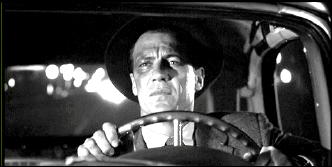
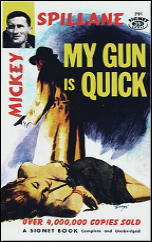
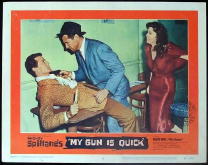
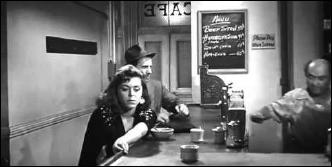
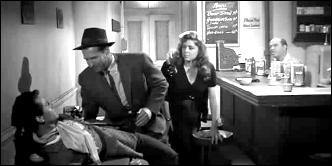
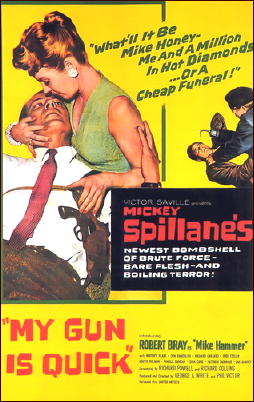
July 2nd, 2014 at 10:37 pm
I guess you;d have to call me a completist. (I’d never admit to choice C.)
July 2nd, 2014 at 10:47 pm
David may be right and I agree with a lot of what he says above, but I have to admit to liking this film more that he does.
I saw it in 2009 and gave it a decent rating, meaning I enjoyed it. I definitely agree this not the Spillane novel and Bray is another non-Mike Hammer.
But I enjoyed the scenes showing 1957 LA and the combination of private eye and film noir elements made it a good B-movie for me. Bear in mind what is said above but I think lovers of crime and film noir should give this low budget movie a try.
July 3rd, 2014 at 12:40 am
Walker
Despite what I wrote I have no problem with this as a generic little private eye movie, but I would object as much if this was labeled Philip Marlowe or Lew Archer, or even Johnny Liddell (generic himself) and not Spillane and Hammer.
Spillane was a unique phenomena, a virtual blueprint of the psyche, the opinions, and the sexual mores of the day (sex being of the sweaty hormonal teenager variety). Whether you respect Spillane or not, merely taking the name of his book and character is a bit like turning Peyton Place into a screwball comedy.
Even if it is funny, what the hell were they thinking?
It’s not the rather bland end product I object to, it’s the pointless action of making the film in the first place as a Spillane project.
And frankly it annoys me because I think Bray could have been the definitive Hammer of the era if anyone had tried. It wasn’t impossible to film Spillane then. I the Jury and The Long Wait are fairly faithful and Kiss Me Deadly may actually be more violent and sexual than Spillane. They could not do this on television with McGavin, but any number of noirish films of the era are easily as brutal as Spillane — check out Mann’s Raw Deal as an example.
It’s as if they remade The Big Sleep and the only thing they kept from the book was the scene in the greenhouse, and went off and turned the rest into a low budget Falcon remake.
I know they expected Hammer and Spillane to sell the film, but there is no real reason they could not have done Mike Hammer. They were just too timid, too lazy, and too cynical to bother. Spillane was the most popular author of his day, and ignoring what he wrote completely when there was no real reason to was cynical and arrogant.
Frankly I would like it much better under another name with Bray called something other than Mike Hammer.
Even then Whitney Blake as a seductress would have been a stretch though.
July 3rd, 2014 at 9:56 am
We are really at odds here. The only performance or element that worked for me, was Whitney Blake. Loved her, really in almost anything she did, but here especially. As for the film, from the opening credits, and the awful tuneless, toneless tribal pounding music, I hated it. Just an opinion of course, but the movie was not exactly well received by public or press.
July 3rd, 2014 at 6:02 pm
Blake isn’t bad per se. It’s just if you are going that hard against type you need a better script and a meatier role. I’ll grant she could have played the part, but she needed a better written part and a better director.
I hate what it did to Spillane and Hammer, but as to the film minus that aspect it’s moderately diverting if ultimately pointless, though why they made Bray so stupid I have never understood.
Whatever else you may say about Spillane, he knows how to plot a private eye novel and go for the gut. Spillane is the only fiction writer I have ever read who can physically raise my blood pressure, this film could induce a mass coma.
Everything that makes Spillane Spillane is missing, and it doesn’t have to be. The mystery doesn’t have to be a tired old rehash, the villains don’t have to be obvious, Velda doesn’t have to be demoted to a generic secretary, the period would allow for tougher action and brutality even if you had to suggest it more than you showed it. I can think of a dozen films that suggest sexuality and brutal violence as much as any Spillane novel shows it.
Whenever I watch this now I think of the line from the second I, The Jury, when Armand Assante’s Hammer rescues a tied up Velda from a psychotic killer about to torture and kill her, and in an expressive sigh sums up how every hero of every thriller must feel rescuing the heroine: “You exhaust me.” This one exhausts me.
There is no excuse for this not to be better. Bray was hardly charismatic, but he is capable of a better performance than he gives here.
Barry, that music was so bad I didn’t even want to deal with it. It sounded like a train wreck blended with a high school marching band trying to be hip. It’s not music, it’s background noise, and racket at that.
February 16th, 2015 at 10:06 am
I agree w/your review – very helpful, too as I was wondering how close it was to the original story.
Glad you posted this and it is a great summation of this film – in my opinion.
July 30th, 2018 at 5:26 pm
Bray did good hand-to-hand combat in My Gun Is Quick. That said, Meeker was much more sadistic in Kiss Me Deadly and his fight with Paul Richards was more effective and shocking than all the brawls in My Gun Is Quick. Bray gets a major beat-down several times yet the thugs never finish him off, a common trope in detective movies and shows like Mannix. Bray and Biff Elliot were good journeymen actors but didn’t catch the soul of Mike Hammer. The good in My Gun was the location shooting including the Bunker Hill section that Kiss also utilized and the fine “tomatoes.” Whitney Blake tried but didn’t come across as much of a femme fatale or a heroine. (Shirley Eaton was nastier as well as sexier in The Girl Hunters.) Roger Corman regular Pamela Duncan was bland as Velda unlike the earthy, perpetually-in-heat Maxine Cooper. A weak story and little suspense made this film slow going. According to IMDB, a dubious source at times, Genie Coree/Gina Core (Maria the stripper) is still with us. The last ten minutes were bland and routine, lacking the bang-zoom of Spilane’s climaxes. Ironically, Robert Aldrich didn’t care for the character yet made the best Hammer film of the decade, even if he never carried a gun.